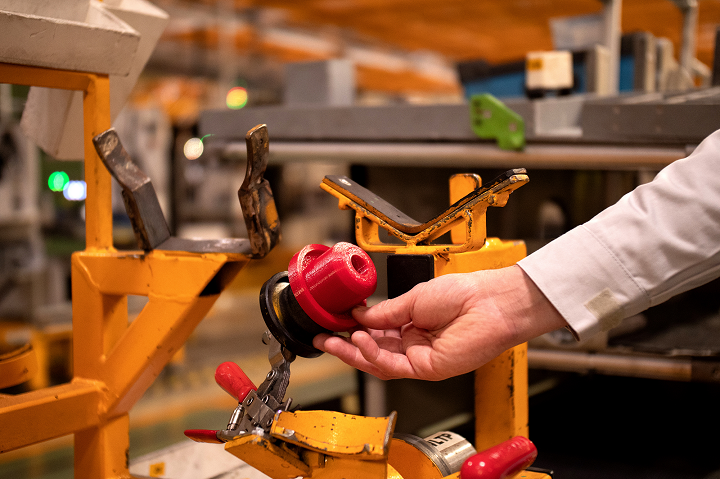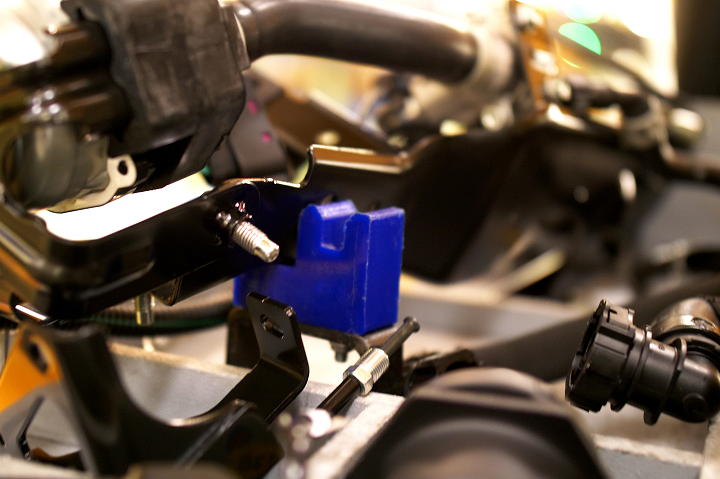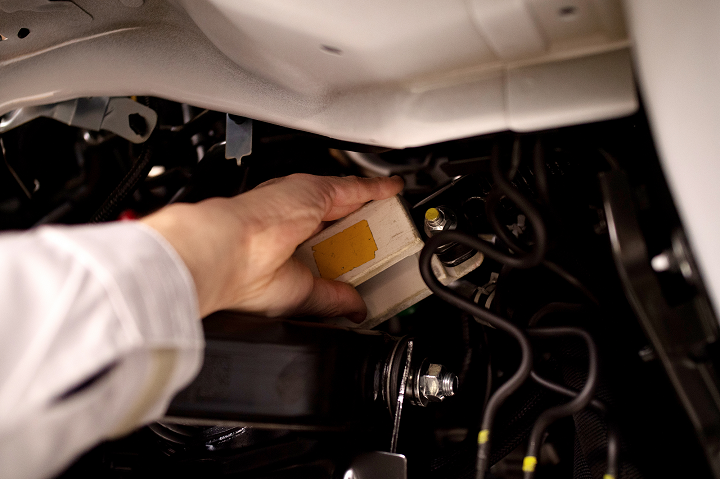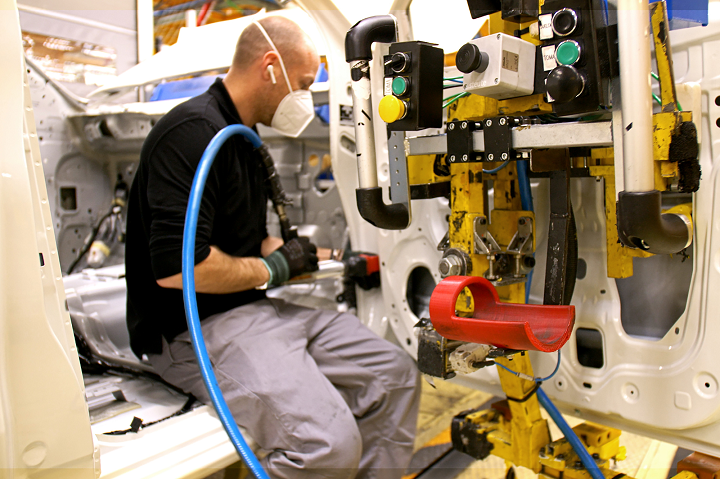In the automotive industry 3D printing has demonstrated an ability to lower costs, make parts lightweight, and speed up development cycles and component production times without sacrificing quality. In terms of big-name automakers adopting 3D printing into their workflow, Nissan seems like it’s lagging behind a bit compared to its fellows. This bums me out a little, as my husband and I both drive Nissan cars. But it looks like those days might be over, as Barcelona 3D printer manufacturer BCN3D announced that Nissan is speeding up its assembly line in Spain with the firm’s fused filament fabrication (FFF) solutions.
Since integrating BCN3D’s industrial desktop 3D printers at its Barcelona factory to print tools, jigs, and fixtures, the automaker is reporting extremely impressive time and cost savings, which could lead to the technology being used to make prototypes and parts at more of its manufacturing sites around the world.
“The automotive industry is probably the best example of scaling up a complex product with the demands of meeting highest quality standards. It’s fascinating to see how the assembly process of a car – where many individual parts are put together in an assembly line – relies on FFF printed parts at virtually every stage,” said Eric Pallarés, the CTO at BCN3D. “Having assembled thousands of cars, Nissan has found that using BCN3D 3D printing technology to make jigs and fixtures for complex assembly operations delivers consistently high quality components at a reduced time and lower cost.”
Until now, Nissan outsourced its jigs and prototype production to mechanical suppliers, who made these parts via traditional methods like drilling and CNC machining. While the quality was high, lead times were long and inflexible. Moreover, it was fairly expensive, with something like a simple tool costing around €400. Nissan has printed 700 parts in-house so far, some at a cost of less than €5, with a total reported cost savings of around 95%. Additionally, the timeline for designing, developing, and producing parts has gone down from one week to one day.
“The performance achieved in terms of reliability has been excellent. Our printer runs nearly 24 hours a day and every year we’re printing around 100 different jigs and tools for specific use in our processes,” said Carlos Rellán Martínez, manager of maintenance & engineering facilities at Nissan Motor Ibérica Zona Franca, Barcelona. “Outsourcing tools to a mechanical supplier was 20 times more expensive than 3D printing the same parts, while the wait for tools went from a week down to one day. By introducing 3D printing, we have increased added value and generated low costs, without high delivery times. We have paid off the investment in the printers very quickly.”
A farm of four BCN3D Epsilon Series 3D printers is housed at Nissan’s additive manufacturing laboratories. The printers, which can work 24/7 to keep up with the automaker’s demanding production schedule, feature an Independent Dual Extrusion (IDEX) system, and this helps speed up production even more because two identical components can be printed at the same time.
BCN3D’s printers have been used to print a great deal of products for Nissan, such as a jig to position and cure a vehicle’s model name; this jig, made out of ABS, cost just €3.45 to make and was printed in 12 hours. A 3D printed TPU tool for fixing a windshield centering gauge took 14 hours to print and cost €8, while a lower drill positioning tool, also printed from ABS, cost €21.50 and took 15 hours to print.
In addition to its 3D printers, Nissan is also using the new BCN3D Smart Cabinet, which was created to provide optimal conditions for protecting and maintaining 3D printing filament. The cabinet helps extend the shelf life of filament and preserve its printability, reduce aesthetic defects, and help users avoid wasting money on reprints.
At the moment, Nissan is 3D printing parts with plastic material, though it is trialing metal ones as well. For a look into the automaker’s Barcelona factory to see how it’s using 3D printing on the assembly line to create prototypes and final parts for vehicles, including the Navara 4×4 pickup truck, check out the video below:
(Source/Images: BCN3D)
Subscribe to Our Email Newsletter
Stay up-to-date on all the latest news from the 3D printing industry and receive information and offers from third party vendors.
You May Also Like
Further Understanding of 3D Printing Design at ADDITIV Design World
ADDITIV is back once again! This time, the virtual platform for additive manufacturing will be holding the first-ever edition of ADDITIV Design World on May 23rd from 9:00 AM –...
3D Printer Maker EVO-tech Reborn as NEVO3D — Once More With Feeling
EVO-tech was a 3D printing service and original equipment manufacturer established in 2013 and based in Schörfling am Attersee, Austria. The company produced high-quality material extrusion systems featuring linear bearings,...
3D Systems Brings 3D Printed PEEK Cranial Implant to the U.S. with FDA Clearance
For more than 10 years, 3D Systems (NYSE:DDD) has worked hand-in-hand with surgeons to plan over 150,000 patient-specific cases, and develop more than two million instruments and implants from its...
CDFAM Returns to Berlin for Second Annual Symposium
The second CDFAM Computational Design Symposium is scheduled for May 7-8, 2024, in Berlin, and will convene leading experts in computational design across all scales. Building upon the first event...






































